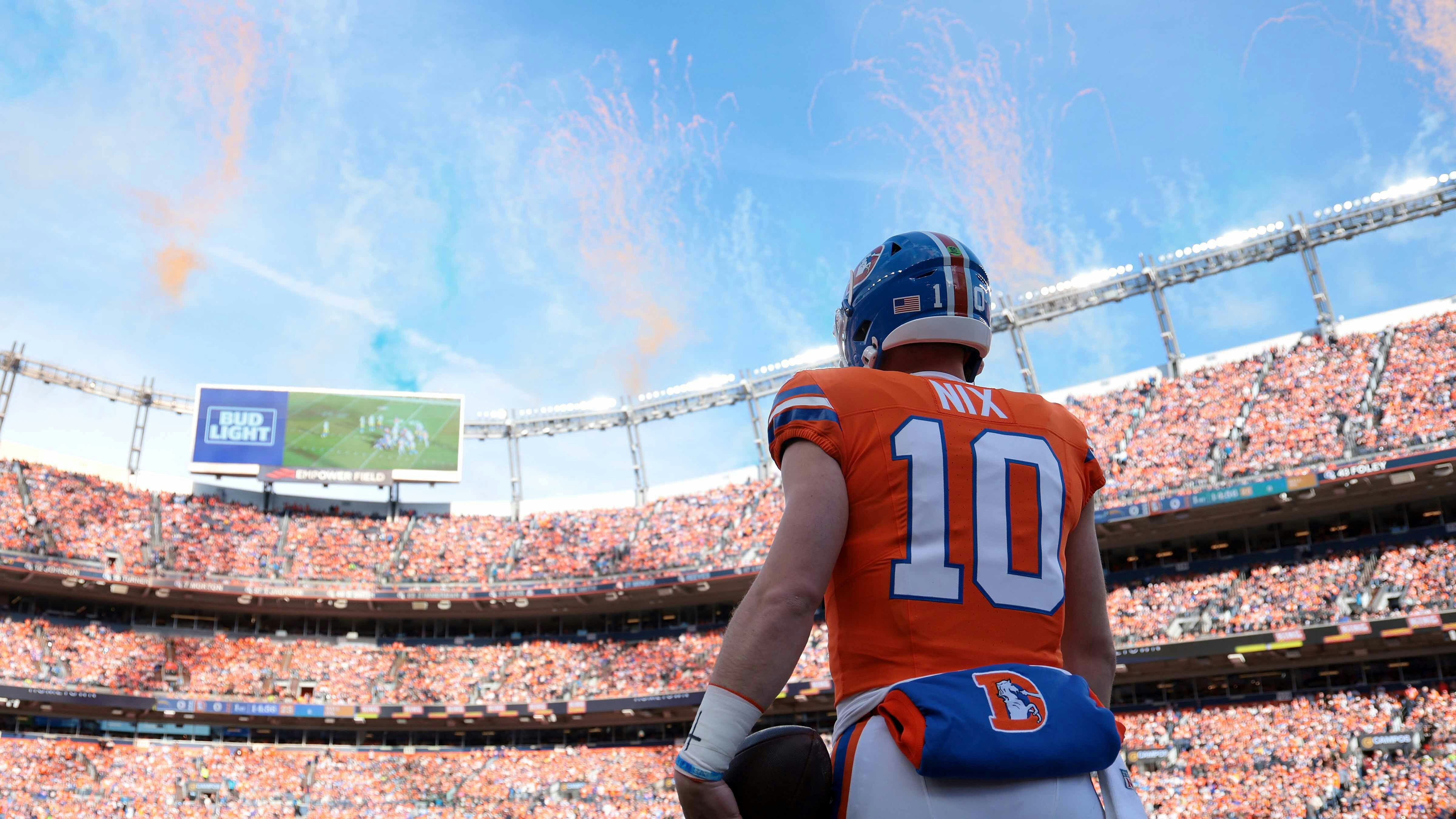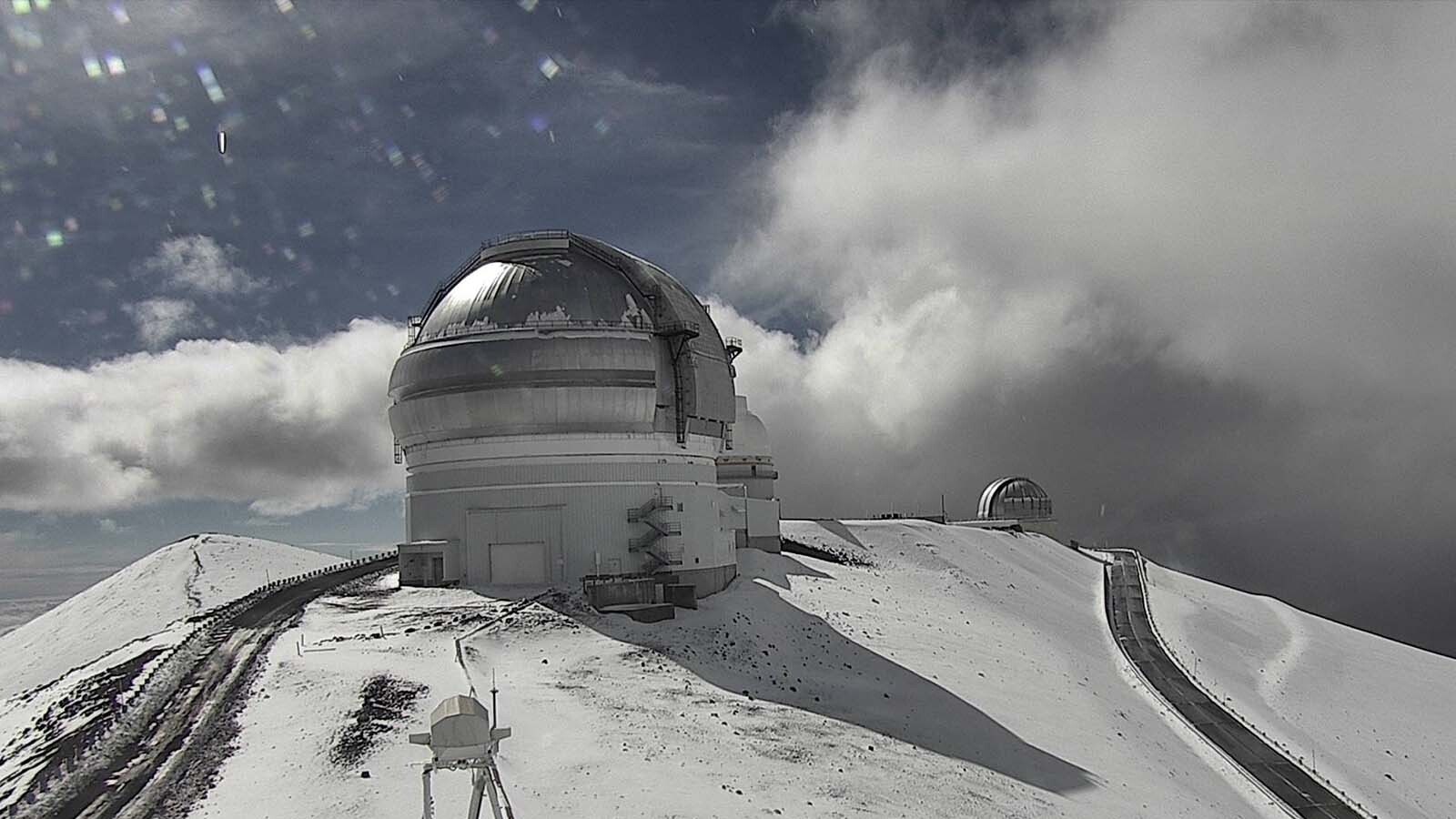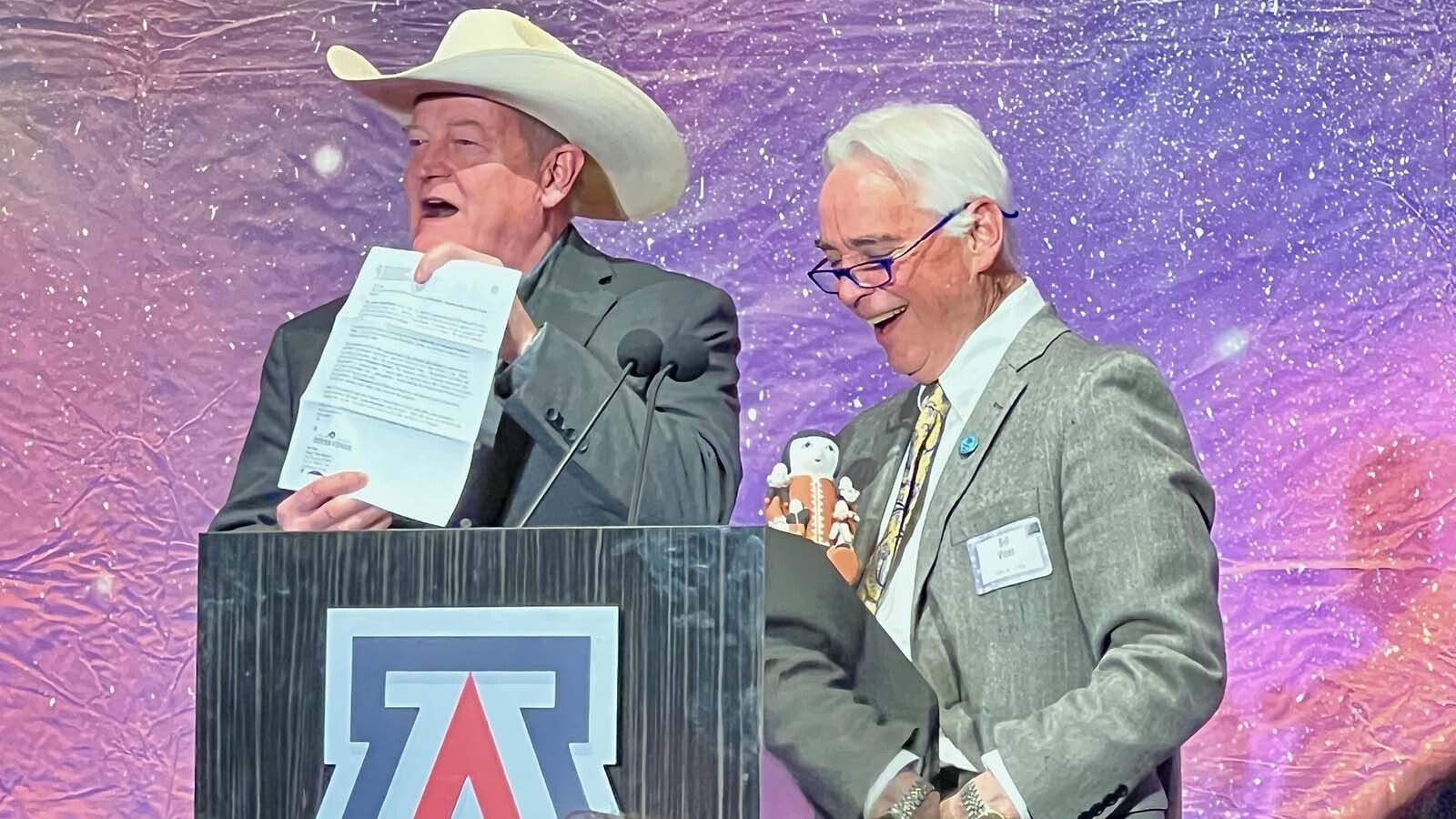In 1482, a 30-year-old Leonardo da Vinci dreamed of creating the largest equestrian statue in the world. More than 500 years later, a smaller version of that dream stands in Sheridan.
Even though it’s one of da Vinci’s famous masterpiece works, the bronze casting of his majestic horse outside the Downtown Sheridan Association has become known as “The Wyoming Horse.”
The saga of da Vinci's Horse is a triumphant celebration of how the vision of a Renaissance genius was realized centuries after his death. Wyoming is one of the few places where da Vinci’s last work is displayed.
The Wyoming Horse was unveiled on the lawn of the Downtown Sheridan Association in August 2015, where still stands as one of the only places in the world where da Vinci’s most ambitious commission can be seen.
“I thought it would grab people’s attention,” Kim Love, who spearheaded the effort to bring da Vinci’s Horse to Wyoming, told Cowboy State Daily. “We've got a lot of nice sculptures in Sheridan from artists with national reputations, but I don't think anyone would grab attention the way da Vinci has.”
Da Vinci In Sheridan
The Wyoming saga of da Vinci’s Horse started with an art class at Sheridan College in 2013. Included in the coursework was Michael Gelb’s book “How to Think Like Leonardo da Vinci: Seven Steps to Genius Every Day.”
Love was reading the book when he encountered the final chapter that told the story of da Vinci’s Horse, the Renaissance master’s long-abandoned — but finally realized — sculpture.
“I had one of those aha moments,” Love said. “I said, ‘I wonder if we could get one of those for our public arts program?’”
Love, then chairman of the Sheridan Public Arts Committee, started calling around to see if Sheridan could get a cast of the bronze sculpture. He eventually connected with Lin Erickson, executive director of the Da Vinci Science Center in Allentown, Pennsylvania.
“Kim told me that bronze sculptures are a big part of who they are in Sheridan,” Erickson said. “It wasn’t exactly what Leonardo was thinking, but horses are a big part of the Western terrain. And he thought that Sheridan should get one of these bronzes.”
Working with several entities, including the Wyoming Community Foundation, Love raised the money and collaborated with Erickson to bring an 8-foot da Vinci’s Horse cast to Sheridan.
“It took about two years to do it,” he said. “(The sculpture) isn’t a Wyoming horse, but it's still a horse. It’s stylistically different than some of the other sculptures we have in town, but we’ve never had any criticism that it wasn’t the right kind of horse or sculpture for Sheridan.”
The Renaissance Master
Leonardo da Vinci has become legendary for thinking ahead of his time. In addition to being a renowned artist and scientist during the High Renaissance in Italy, his notebooks contain designs for flying machines and tanks, along with a wealth of knowledge on anatomy, geology and engineering.
“Leonardo was tremendously curious,” said Erickson. “He didn't think of himself as a scientist or an engineer. He never separated the disciplines but always integrated science, engineering and the arts. It’s been said that curiosity was the key to his genius.”
However, da Vinci’s creativity mainly existed in his head and journals. Most of his visionary discoveries and musings were never realized, either because they were abandoned or physically impossible to produce, given the technology of the 15thCentury.
“He never finished anything except jobs and commissions,” Erickson said.
Da Vinci’s finished works include The Mona Lisa, The Last Supper, and Salvator Mundi, the most expensive painting sold at auction for $450.3 million.
However, the largest commission da Vinci never finished in his lifetime was a massive equestrian statue. It wasn’t his fault and might not have been logistically possible then, but the dream of a giant horse stayed with da Vinci for his entire life and the lives of many others hundreds of years later.

The Great Horse
In 1482, the Duke of Milan Ludovico il Moro commissioned da Vinci to build a monument to his father. The Great Horse, a 24-foot-tall bronze sculpture, would have been the largest equestrian statue in the world. Da Vinci spent a decade studying horses and refining his design.
“He had pages and pages of drawings of the sculpture,” Erickson said. “He even speculated how he was going to pour and heat the bronze. He was clearly fascinated by it, probably because it blended his fascination with science and technology and how you would get this done.”
In November 1493, da Vinci unveiled a full-size clay sculpture of his horse, widely celebrated for its artistic and technical achievement. The artist was ready for his clay sculpture to become a bronze monument and hoped molding and casting would start the following year.
Unfortunately, Milan faced an imminent attack by the French. The 80 tons of bronze the Duke of Milan had allocated for da Vinci’s sculpture were instead used to make cannons.
When the French successfully invaded Milan in 1499, archers used the deteriorating clay sculpture of the horse for target practice. Da Vinci abandoned the project, which was not realized or resurrected by the time he died in 1519.
Drawing Inspiration
Interest in da Vinci’s Horse was resurrected after some of the artist’s preparatory drawings for the sculpture were discovered in the National Library of Madrid and published in a 1977 edition of National Geographic, titled The Horse That Never Was.
That’s where Charles Dent, a retired pilot, first encountered da Vinci’s Horse and decided to finish the Renaissance master’s largest work. He founded Leonardo da Vinci’s Horse Inc., working with a global network of historians and sculptors to bring da Vinci’s drawings off the page and realize the full-size sculpture he envisioned for the people of Milan.
“The article gave Dent the idea that we ought to give Leonardo his horse or try to create a horse utilizing his drawings,” Erickson said. “So, he created a foundation, working with scholars around the world, get this 24-foot horse cast.”
Despite a plethora of drawings by da Vinci’s hand, creating his horse was a challenging endeavor. The artist never settled on a final pose for the sculpture, and none of his rediscovered drawings were reliable blueprints for actualizing the design.
Dent died in December 1994, and his family diligently continued the mission to create the sculpture. He had commissioned sculptor Garth Herrick to make a clay model of da Vinci’s Horse based on the drawings, but it couldn’t be scaled up to the full 24 feet.
“They were trying to honor the work that da Vinci and Dent had done, but it just wasn’t right,” Erickson said. “They ultimately brought in a sculptor to redo a smaller version and projected it for the full-size sculpture.”
Artist Nina Akamu, a renowned animal and horse sculptor, was enlisted to finish da Vinci’s Horse. She studied da Vinci’s notes, anatomical drawings and horses that would’ve been in Milan during his life to create a new sculpture that adhered to da Vinci’s vision in his distinct style and could be created in bronze.
Where Else In The World
The result of Akamu’s extensive work was unveiled on Sept. 10, 1999. The Horse, a 24-foot bronze sculpture, was placed at the Hippodrome of San Siro, a racetrack in Milan, Italy, finally realizing da Vinci’s dream.
“The foundation gave the sculpture to the Italians to thank them for the Renaissance,” Erickson said.
Another 24-foot cast of da Vinci’s Horse was placed at the Frederik Meijer Gardens & Sculpture Park in Grand Rapids, Michigan, in October 1999. Dent’s dedication to da Vinci’s work was honored with a 12-foot cast of the sculpture, placed in the Charles C. Dent Memorial Garden at The Baum School of Art in Allentown, Pennsylvania, and an eight-foot cast stands in da Vinci’s hometown of Vinci, Italy.
Sheridan is home to the most recent installation to date, and the only other place in the world exhibiting da Vinci’s Horse.

Displayed With da Vinci
The Wyoming Horse, as Sheridan’s installation of da Vinci’s Horse is called, isn’t the first or the largest in the world. However, Love believes it might be the most unique installation given its context and placement.
“It’s a signature sculpture of Sheridan’s community art program,” he said. “We didn’t have much of a budget when we started the program around 2000, so we had limited amounts of smaller sculptures from lesser-known artists. Many of those artists have national reputations, but I don't think they grab your attention the way da Vinci does.”
Instead of sharing a museum gallery with other Italian masters, Sheridan showcases da Vinci’s sculpture among works by iconic American artists. Love believes the allure of da Vinci’s Horse draws more attention to the other sculptures around Sheridan.
After all, where else can bronze artists like Tony Hostetler, Steve Castro, and Chris Navarro say they share space with Leonardo da Vinci?
“You can do a Google search for da Vinci’s Horse and see that there’s one in Sheridan,” he said. “Then, people decided they ought to stop by and see it. And da Vinci’s Horse is there, contiguous to the rest of our sculpture program. So hopefully, the people will walk the street and see the other sculptures.”
Erickson thinks Sheridan was the perfect setting for da Vinci’s Horse.
“It's so beautiful,” she said. “Such a great community. High in the mountains of Wyoming is this small, charming town with dude ranches all around it and bronze sculptures on every corner. I could easily live there.”
Erickson is still busy with the Da Vinci Science Center in Allentown, which merged with Leonardo da Vinci’s Horse Inc. in 2003. She recently oversaw an $80 million expansion to the museum with extensive interactive exhibits designed to ignite da Vinci’s passionate curiosity and interdisciplinary mindset to future generations.
More than anything, Erickson praised da Vinci’s ability to connect the seemingly disparate aspects of the world and express them through his artistry and creativity. She believes the Renaissance genius would be thrilled to see his horse standing in Sheridan.
“He’s one of the most famous artists ever, and this sculpture is the only legitimate connection to da Vinci in America,” she said. “The legacy of Leonardo da Vinci exists in Italy and France, and now he’s got a real connection to Allentown, Grand Rapids, and Sheridan, Wyoming.”
Contact Andrew Rossi at arossi@cowboystatedaily.com
Andrew Rossi can be reached at arossi@cowboystatedaily.com.





